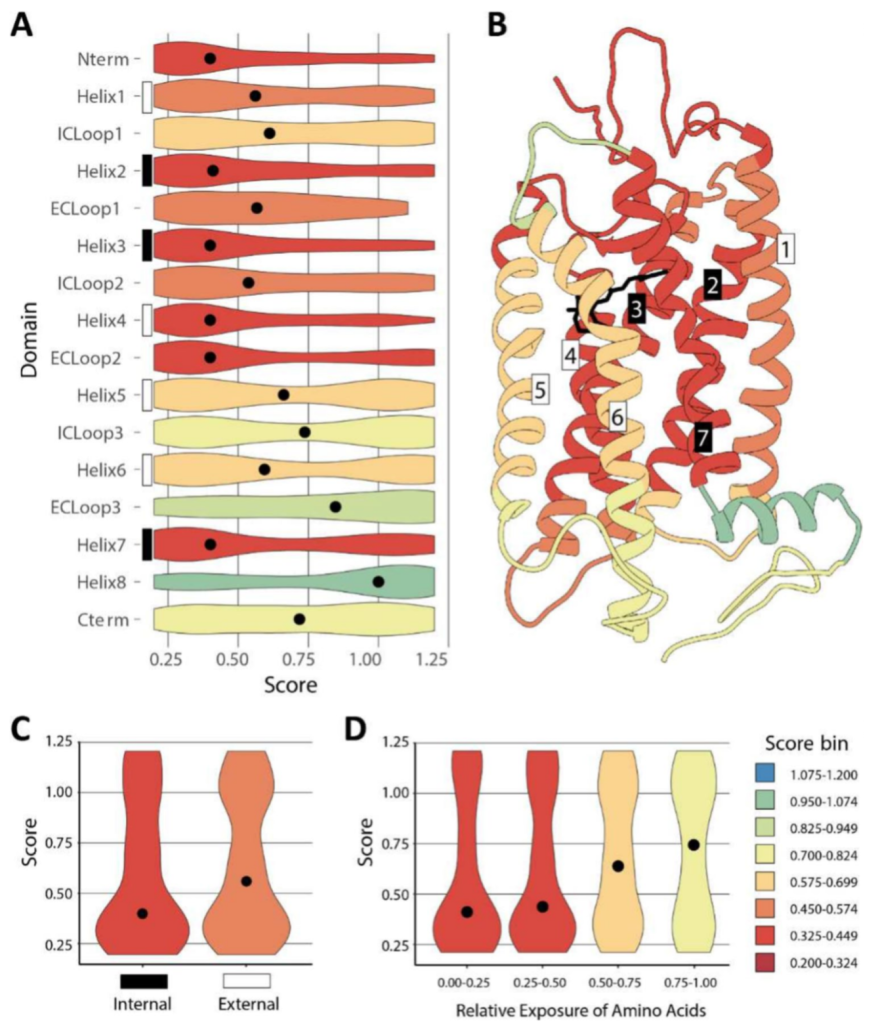
Eukaryotic cells use G protein-coupled receptors (GPCRs) to convert external stimuli into internal signals to elicit cellular responses. GPCRs are critical to many biological processes; however, the effect of mutations in GPCR-coding genes on GPCR activation and downstream signaling pathways remains poorly understood.
Benjamin M. Scott, Steven K. Chen, and colleagues have successfully demonstrated the ability to scale up a yeast fluorescent reporter assay to measure in high throughput the effects of over 1200 (of a possible 6612) missense mutations in human rhodopsin, a GPCR involved in visual transduction. Analysis of the results revealed intriguing properties of mutational tolerance potentially generalizable to other transmembrane proteins. Single mutations in rhodopsin have been identified in many clinically identified disease variants, and comparison of these mutants to functional scores from the screen found many of them to be loss of function, as expected. The results demonstrate the exciting potential for high-throughput systems to link genotype to phenotype and will help inform and predict disease phenotypes for clinical interpretation.

